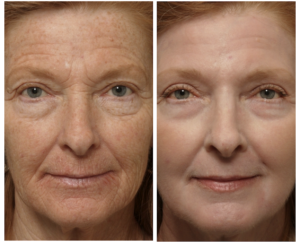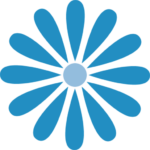

Experience the Most Powerful Anti-Aging Peel Yet!
Imagine looking in the mirror and seeing a smoother, younger, more radiant version of yourself. With the Croton Peel, this transformation is not just a dream
Enhance your natural beauty, achieve a harmonious facial profile and boost your confidence.
A rhinoplasty, commonly referred to as a nose job, is a type of cosmetic surgery procedure that reconstructs the size and shape of the nose. Rhinoplasty can also be used to correct structural deformities caused by injury, illness, or congenital defects.
During the procedure, our board-certified surgeon Dr. James Lacey, may reduce or increase the size of the nose, alter the shape of the bridge or tip, or change the angle between the nose and the upper lip.
Other common goals of the procedure include improving symmetry and narrowing the nostrils. A nose job can also improve breathing caused by airway abnormalities in the nose. It is typically performed under general anesthesia and can take anywhere from one to five hours to complete, depending on the complexity of the case.
Nose jobs are one of the most popular plastic surgery procedures available. A nose job can be done for both medical and cosmetic reasons. Here are four of the main benefits of a nose job:
Overall, it can help improve the appearance and function of the nose while also helping to boost self–confidence and self–esteem.
Rhinoplasty is a personal decision, and the best candidates are those who understand the procedure, have clear goals, and are prepared for both the physical and emotional aspects of recovery. Here are some additional criteria:
Here’s an overview of the two main types of rhinoplasty:
During open rhinoplasty, an incision is made across the columella, the small strip of tissue between the nostrils. With this approach, Dr. Lacey lifts the skin and accesses the underlying structures of the nose more easily. The incision leaves a small, discreet scar on the columella, which usually fades over time.
In closed rhinoplasty, all incisions are made inside the nostrils, so no external scars are visible. This method is less invasive and allows shorter recovery time and less swelling compared to open rhinoplasty.
Here’s a step-by-step overview of what typically happens during the surgery:
Before the surgery, you’ll discuss your goals, concerns, and desired outcomes with Dr. James Lacey. This includes a thorough examination of your nasal structure and facial features. Next, he will create a customized surgical plan based on your specific needs and expectations.
On the day of the surgery, you are given general anesthesia to make you unconscious so you’re comfortable throughout the procedure.
Dr. Lacey makes incisions either inside the nostrils (closed rhinoplasty) or across the columella (open rhinoplasty).
After making the incision, Dr. Lacey reshapes the bone and cartilage to achieve the desired shape. This may involve removing or adding tissue, modifying the nasal tip, or adjusting the bridge. For functional issues, the internal structures may be corrected to improve breathing. Once the desired shape is achieved, he repositions the skin over the new nasal structure. The incisions are then closed with sutures. In closed rhinoplasty, the sutures are internal and not visible, while in open rhinoplasty, some sutures may be external.
After the procedure, a nasal splint is applied to support the new shape and reduce swelling. You may also have internal nasal packing or external dressings. Then, you’ll be monitored in a recovery room until you are stable enough to go home.
The first few days after your rhinoplasty will involve some discomfort and swelling. You might experience bruising around your eyes and nose. To manage swelling, use ice packs and elevate your head when sleeping.
Most people can return to work within a week, but strenuous activities should be avoided for several weeks. Avoid blowing your nose and wearing glasses for the first few weeks to protect your healing nose.
It takes several months for the final results of your rhinoplasty to become apparent. Swelling and bruising will gradually subside, which will reveal your new nose shape.
Like any surgical procedure, rhinoplasty carries certain risks and potential complications. These include:
To schedule your consultation, simply call our Cosmetic
Patient Coordinators at 613-591-1099 or complete the
contact form below. We are here to support you through
your journey and look forward to assisting you!


Imagine looking in the mirror and seeing a smoother, younger, more radiant version of yourself. With the Croton Peel, this transformation is not just a dream


Valentine’s Day is all about celebrating love—and this year, we’re helping you love the skin you’re in! Kanata Plastic Surgery is excited to share our


Why Cosmetic Fillers Might be Right For You Cosmetic fillers are a non–surgical type of cosmetic treatment used for facial rejuvenation and enhancing overall facial


9 Reasons to Choose our Private Surgical Facility over a Public Hospital When it comes to plastic surgery, there are many options available. While many


Will Botox Get Rid of Wrinkles ? Botox is a popular treatment for wrinkles that is becoming increasingly popular. It is a type of injectable

EXCELLENT rating
Based on 70 reviews